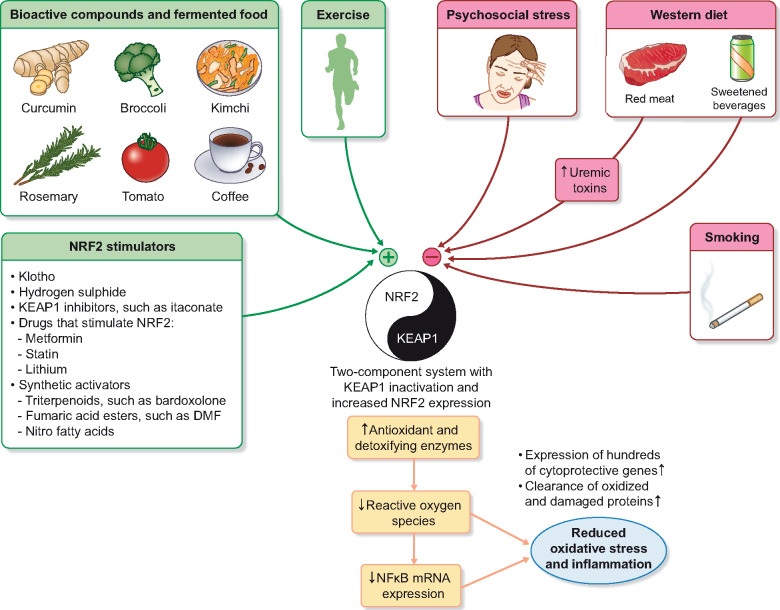FIGURE 4.
An unhealthy lifestyle may, via continuous depression of NRF2, affect redox, protein and metabolic homoeostasis and increase the risk of burden of lifestyle diseases. Whereas the typical Western diet seems to inhibit NRF2 cell defense pathways, diets based on bioactive compounds and fermented products have been shown to activate this cytoprotective system. While physical activity stimulates NRF2–KEAP1 [77] and contributes to stress resilience, cigarette smoking [78] and psychological stress [79] blocks the protective expression of the NRF2–KEAP1 pathway. NRF2 and KEAP1 can be seen as having a ‘yin and yang’ relationship in which graded inhibition of KEAP1 increased the expression of NRF2, which in turn increases the expression of hundreds of cytoprotective genes. A comprehensive overview of the molecular mechanisms governing the functions of KEAP1 and NRF2 was published by Yamamoto et al. [5]. Studies need to test if the various synthetic NRF2 stimulators (such as BARD) and KEAP1 inhibitors (such as itaconate) can protect against the plethora of inflammatory diseases that accumulate with age.

